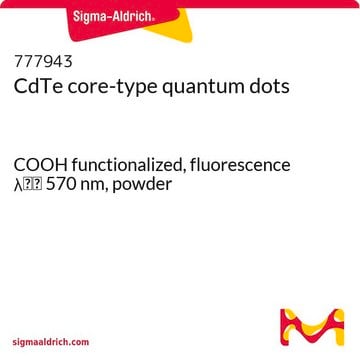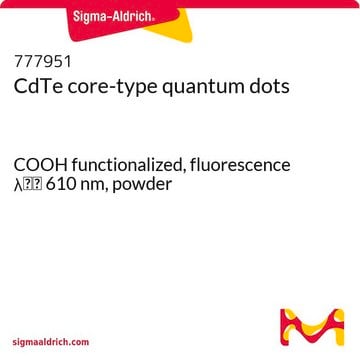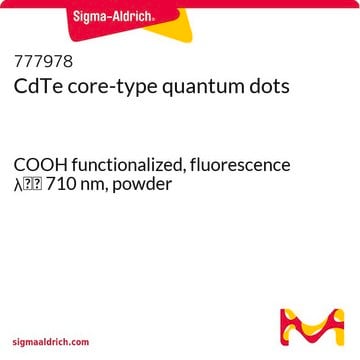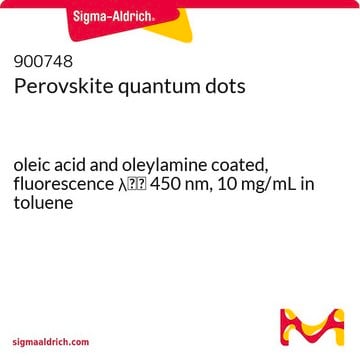777935
CdTe core-type quantum dots
COOH functionalized, fluorescence λem 520 nm, powder
Synonym(s):
Fluorescent nanocrystals, QDs, artificial atoms
About This Item
Recommended Products
form
powder
fluorescence
λem 520 nm
, quantum yield 36%
storage temp.
2-8°C
Looking for similar products? Visit Product Comparison Guide
Application
Signal Word
Warning
Hazard Statements
Precautionary Statements
Hazard Classifications
Acute Tox. 4 Inhalation - Acute Tox. 4 Oral - Aquatic Acute 1 - Aquatic Chronic 1 - Eye Irrit. 2 - Skin Irrit. 2 - STOT SE 3
Target Organs
Respiratory system
Storage Class Code
11 - Combustible Solids
WGK
WGK 3
Certificates of Analysis (COA)
Search for Certificates of Analysis (COA) by entering the products Lot/Batch Number. Lot and Batch Numbers can be found on a product’s label following the words ‘Lot’ or ‘Batch’.
Already Own This Product?
Find documentation for the products that you have recently purchased in the Document Library.
Articles
Dye-sensitized solar cells as a promising, low-cost photovoltaic technology.
Dye-sensitized solar cells as a promising, low-cost photovoltaic technology.
Dye-sensitized solar cells as a promising, low-cost photovoltaic technology.
Dye-sensitized solar cells as a promising, low-cost photovoltaic technology.
Protocols
Selenium's roles range from essential dietary element to semiconductor in advanced applications like xerography.
Selenium's roles range from essential dietary element to semiconductor in advanced applications like xerography.
Selenium's roles range from essential dietary element to semiconductor in advanced applications like xerography.
Selenium's roles range from essential dietary element to semiconductor in advanced applications like xerography.
Our team of scientists has experience in all areas of research including Life Science, Material Science, Chemical Synthesis, Chromatography, Analytical and many others.
Contact Technical Service









